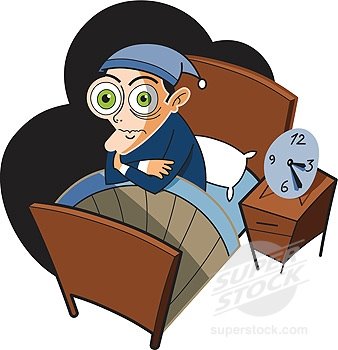

Poor sleep quality contributes to the development of depression, and having depression makes a person more likely to develop sleep issues. 3 Depression and sleep issues have a bidirectional relationship. 2 Sleep disturbance is the prominent symptom in patients with depression, and in China 64.6% of them reported insomnia. 1 More than 50 million people in China (3.6% of the population) experience depressive disorders each year.
#Opposite of insomnia registration#
Trial Registration Identifier: NCT03122080ĭepressive disorders, which are characterized by depressed mood, loss of interest, and reduced energy leading to diminished activity, are one of the most commonly diagnosed psychiatric disorders, affecting more than 264 million people worldwide. No serious adverse events were reported.Ĭonclusions and Relevance In this randomized clinical trial of EA treatment for insomnia in patients with depression, quality of sleep improved significantly in the EA group compared with the SA or control group at week 8 and was sustained at week 32. No between-group differences were found in the frequency of sleep awakenings. Significant improvement in the 17-item Hamilton Depression Rating Scale (−10.7 ), Insomnia Severity Index (−7.6 ), and Self-rating Anxiety Scale (−2.9 ) scores and the total sleep time recorded in the actigraphy (29.1 minutes) was observed in the EA group during the 8-week intervention period ( P <. The efficacy of EA in treating insomnia was sustained during the 24-week postintervention follow-up. At week 8, the difference in PSQI score was −3.6 (95% CI, −4.4 to −2.8 P < .001) between the EA and SA groups and −5.1 (95% CI, −6.0 to −4.2 P < .001) between the EA and control groups. The mean difference in PSQI from baseline to week 8 within the EA group was −6.2 (95% CI, −6.9 to −5.6). Results Among the 270 patients (194 women and 76 men mean age, 50.3 years) included in the intention-to-treat analysis, 247 (91.5%) completed all outcome measurements at week 32, and 23 (8.5%) dropped out of the trial. Secondary outcomes included PSQI at 12, 20, and 32 weeks of follow-up sleep parameters recorded in actigraphy Insomnia Severity Index 17-item Hamilton Depression Rating Scale score and Self-rating Anxiety Scale score. Main Outcomes and Measures The primary outcome was change in Pittsburgh Sleep Quality Index (PSQI) from baseline to week 8. Patients in the EA and SA groups received real or sham acupuncture treatment, 3 sessions per week for 8 weeks, for a total of 24 sessions. Interventions All patients in the 3 groups were provided with standard care guided by psychiatrists. Data were analyzed from May 4 to September 13, 2020.
#Opposite of insomnia manual#
Patients were 18 to 70 years of age, had insomnia, and met the criteria for depression as classified in the Diagnostic and Statistical Manual of Mental Disorders (Fifth Edition). Patients were randomized to receive EA treatment and standard care, sham acupuncture (SA) treatment and standard care, or standard care only as control.
#Opposite of insomnia plus#
Objective To assess the efficacy and safety of EA as an alternative therapy in improving sleep quality and mental state for patients with insomnia and depression.ĭesign, Setting, and Participants A 32-week patient- and assessor-blinded, randomized, sham-controlled clinical trial (8-week intervention plus 24-week observational follow-up) was conducted from September 1, 2016, to July 30, 2019, at 3 tertiary hospitals in Shanghai, China.

Importance Electroacupuncture (EA) is a widely recognized therapy for depression and sleep disorders in clinical practice, but its efficacy in the treatment of comorbid insomnia and depression remains uncertain. Shared Decision Making and Communication.Scientific Discovery and the Future of Medicine.Health Care Economics, Insurance, Payment.Clinical Implications of Basic Neuroscience.Challenges in Clinical Electrocardiography.


 0 kommentar(er)
0 kommentar(er)
